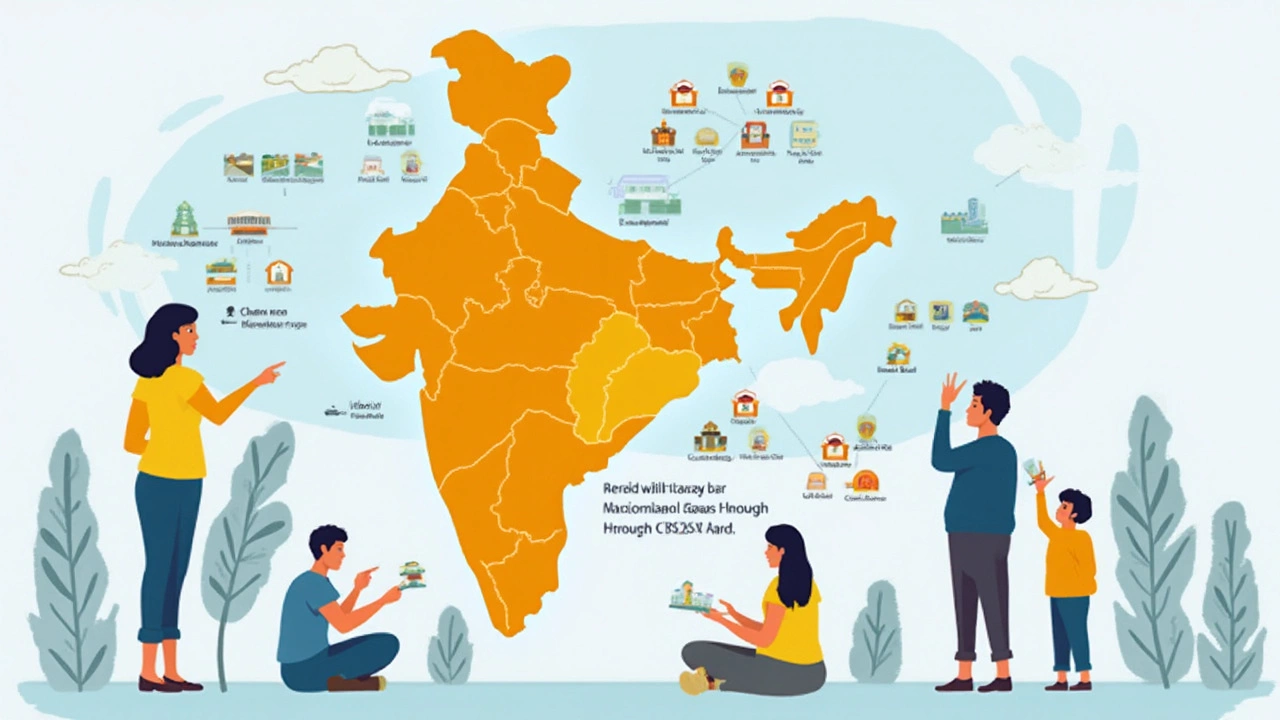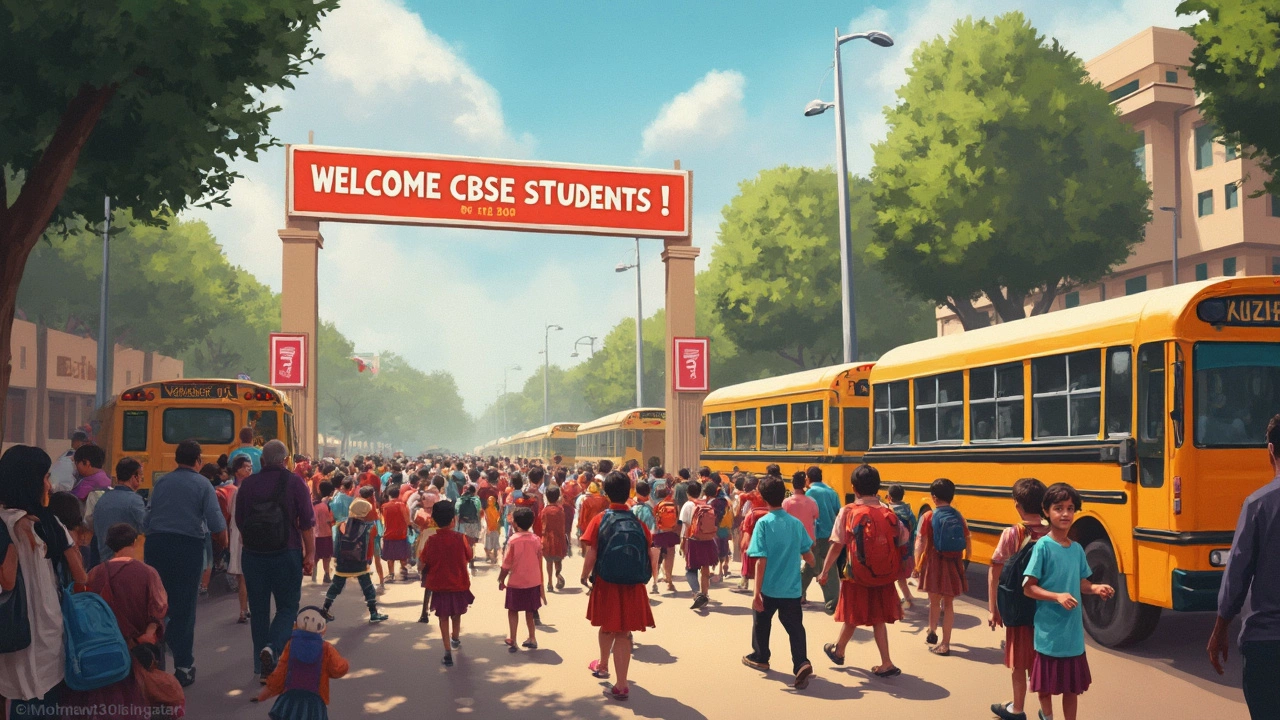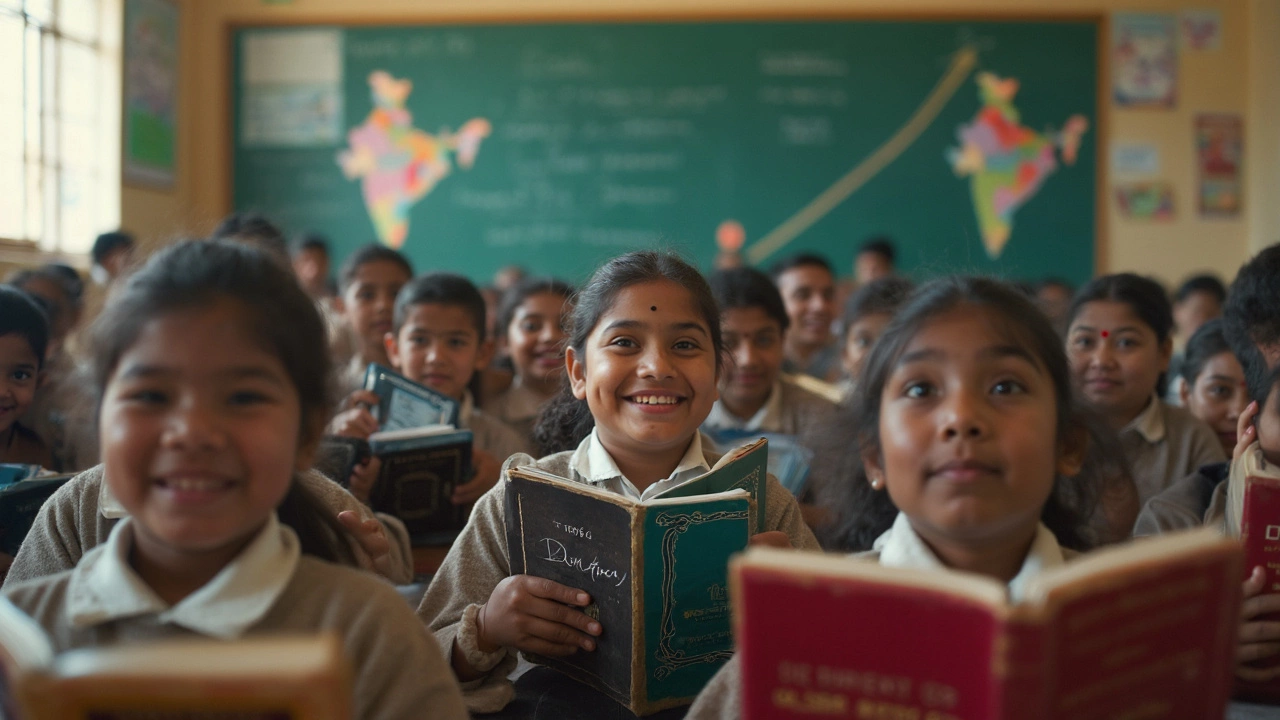India’s CBSE board doesn’t just run a few schools—it oversees millions of students, and the numbers might make your jaw drop. Latest official data shows that over 24 million (2.4 crore) students are enrolled with the CBSE board for the school year 2024-25. This covers both private and government schools, from the tiny village classes to swanky city campuses.
Wondering why this matters? If you're thinking about CBSE for your child, these numbers mean you’ll find CBSE schools just about anywhere in India. It also means your child will have access to standardized study materials and a level playing field when it comes to board exams.
- How Many Students Are Enrolled in CBSE?
- Year-on-Year Growth: Are CBSE Numbers Rising?
- Which States Top the CBSE Charts?
- CBSE vs Other Boards: Where Does It Stand?
- Tips for Parents and Students Navigating CBSE
How Many Students Are Enrolled in CBSE?
If you’re curious about just how many teens and kids follow the CBSE students India tag, here’s something solid—CBSE, or the Central Board of Secondary Education, counts more than 24 million students registered in its system for the 2024-25 academic year. This covers all grades, from the first day of Class 1 up to those nerve-wracking Class 10 and Class 12 board exams.
Here’s a simple table to lay out the details for this year:
| Class Level | Approx. Enrolled Students (2024-25) |
|---|---|
| Primary (Class 1-5) | 7.5 million |
| Middle (Class 6-8) | 6.2 million |
| Secondary (Class 9-10) | 5.3 million |
| Senior Secondary (Class 11-12) | 5 million |
| Total | 24 million |
This isn’t just a random guess. The CBSE’s official circular published in March 2025 states,
“CBSE-affiliated schools reported student enrollment numbers crossing the 24 million mark for the 2024-25 session, continuing the board’s steady growth over the past decade.”
It’s mind-boggling when you consider that the CBSE oversees more than 28,600 schools across the country and even some abroad. And this isn't all private schools—about half of these are government-funded, so the mix is pretty diverse.
Here are a few quick facts that put this number in perspective:
- CBSE runs schools not just in big cities, but in tiny towns and villages—so there’s no shortage of options.
- More than 1.3 million students sat the Class 10 exam in 2024, which gives you a sense of the scale and reach.
- Diversity is huge: students come from every state, different backgrounds, and even some families living overseas.
So, if you’re planning to enroll your child, you’re joining one of the biggest school networks in the world. It’s no small club.
Year-on-Year Growth: Are CBSE Numbers Rising?
If you wonder how the number of CBSE students in India has changed over the years, the short answer is: it’s gone up—by a lot. The CBSE board isn’t just holding steady; enrollment keeps rising almost every year, with more families and schools choosing the CBSE syllabus for its consistency and recognition.
Let’s look at some real numbers. Check out how student enrollments for the two main public board exams—Class 10 and Class 12—have stacked up over the past few years:
| Year | Class 10 Students | Class 12 Students |
|---|---|---|
| 2021 | 21.5 lakh | 14.1 lakh |
| 2022 | 22.5 lakh | 14.5 lakh |
| 2023 | 21.8 lakh | 16.9 lakh |
| 2024 | 22.2 lakh | 17.5 lakh |
Notice the steady jump, especially for Class 12. The small dip for Class 10 in 2023 is likely due to the impact of the pandemic, which caused a bit of disruption in school enrollments. But things bounced back quickly after schools reopened.
So, why the increase? More parents want an education path that works anywhere in India, and CBSE fits that bill. Plus, new schools keep getting added to the board (there are over 28,000 CBSE schools now). The numbers aren’t just rising—they’re still outpacing most other Indian boards.
If you’re planning long-term, that trend’s worth watching. It means resources, coaching, and extra support for CBSE students are also growing with each year, which helps everyone in the ecosystem.

Which States Top the CBSE Charts?
Some states are superstars when it comes to CBSE student enrollment. If you walk into a school in Delhi or Uttar Pradesh, chances are you're meeting a bunch of CBSE students. These states don’t just lead in numbers—they shape how the board’s exams and results play out across India.
Let’s break down the student count by a few of the top-ranking states for the 2024-25 session. This isn’t just trivia—it helps you figure out where CBSE has the strongest presence, which matters if you’re relocating or searching for good schools.
| State/UT | Number of CBSE Students (Approx.) |
|---|---|
| Uttar Pradesh | 4,250,000 |
| Delhi NCR | 2,750,000 |
| Maharashtra | 2,100,000 |
| Rajasthan | 1,850,000 |
| Haryana | 1,400,000 |
| Kerala | 1,050,000 |
| Tamil Nadu | 900,000 |
| Karnataka | 800,000 |
Delhi NCR stands out, with over 2.7 million students enrolled under CBSE students India numbers. Uttar Pradesh is miles ahead in sheer volume, but that’s because it has a massive population. On the other hand, Kerala and Tamil Nadu still have substantial CBSE numbers, even though most local schools follow their state boards. States like Maharashtra and Karnataka show a steady rise as urban families prefer CBSE over state boards for consistency in syllabus and national-level exam prep.
If you’re curious about trends, notice how northern states dominate. But cities in the south and west—like Bengaluru, Chennai, and Mumbai—are seeing more families picking CBSE schools every year.
CBSE vs Other Boards: Where Does It Stand?
Let’s put things side by side for a better look. The Central Board of Secondary Education, or CBSE students India, is huge, but it’s not the only big player. India has other major school boards like the State Boards, CISCE (which runs ICSE, ISC), and newer ones like NIOS. Here’s how CBSE stacks up against them in actual numbers:
| Board Name | Estimated Number of Students (2024-25) | No. of Schools |
|---|---|---|
| CBSE | 24,000,000+ | 28,000+ |
| State Boards (combined) | Approx. 120,000,000 | 200,000+ |
| CISCE (ICSE/ISC) | 2,500,000 | 2,400+ |
| NIOS | 1,500,000+ | Online/open schools |
What’s the deal? State Boards still enroll the most students by a wide margin. They’re everywhere, especially in rural zones. CBSE comes next, dominating private and central government schools (think Kendriya Vidyalayas and Jawahar Navodaya Vidyalayas).
Why do so many families pick CBSE? Simple: the curriculum gets you ready for national entrance exams like JEE, NEET, and even some overseas studies. Plus, since it’s the same across India, moving between states doesn’t lead to big school headaches. ICSE is known for detailed English and broader subjects, but it has way fewer schools.
- If you’re aiming for central exams or want the option to move cities easily, CBSE’s network wins.
- If you’re staying put and your state board school is solid, especially for regional languages, you might stick with State Boards.
Bottom line: CBSE is giant, but State Boards are still king for raw numbers. The real choice comes down to your priorities: mobility, exams, or sticking to home turf.

Tips for Parents and Students Navigating CBSE
Facing the massive CBSE students India network can be a bit overwhelming at first, but knowing the basics helps a ton. Here’s how you can make the most out of the CBSE journey—whether your kid is just starting out or gearing up for boards.
- Stick to the Official Syllabus: CBSE updates its syllabus almost every year. Always use the official curriculum available at cbseacademic.nic.in. Don’t get stuck using old books—there’s a chance something’s changed.
- Useful Study Resources: NCERT textbooks are central for all CBSE exams. In fact, more than 90% of board exam questions come straight from these books. No need to splurge on fancy guides; stick to the basics and stay consistent with practice papers.
- CBSE Sample Papers and Marking Schemes: Every year, CBSE releases sample question papers and their marking schemes on the official site. These help students see the pattern and scoring tricks—don’t skip them, especially for Class 10 and 12 board exams.
- Registration Deadlines: Every student must register with CBSE through their school. Missing deadlines can mean fines or even missing exams, so keep an eye on all official notifications—schools usually provide reminders, but double-check yourself.
- Focus on Practical Skills: CBSE isn’t just about mugging up theory. Practicals in science subjects count for 20-30% of the marks. Kids who ignore lab work or projects usually lose out.
- Co-curricular Choices: CBSE schools offer activities ranging from sports to coding clubs. Participation helps build a more complete report card and, with the new education policy, may even impact board results down the line.
Here’s a quick view of student strength at key class levels for the year 2024-25. This snapshot shows just how many kids you’ll be joining at each big milestone:
| Class Level | Approximate Number of Students (2024-25) |
|---|---|
| Class 10 | 2 million |
| Class 12 | 1.65 million |
| Total (All Classes) | 24 million |
Last tip—don’t forget about the support network. Most kids struggle at some point with stress or tough subjects. CBSE has helplines and many schools have counselors. Don’t hesitate to use these resources—they exist for a reason, and nobody gets through school alone.
